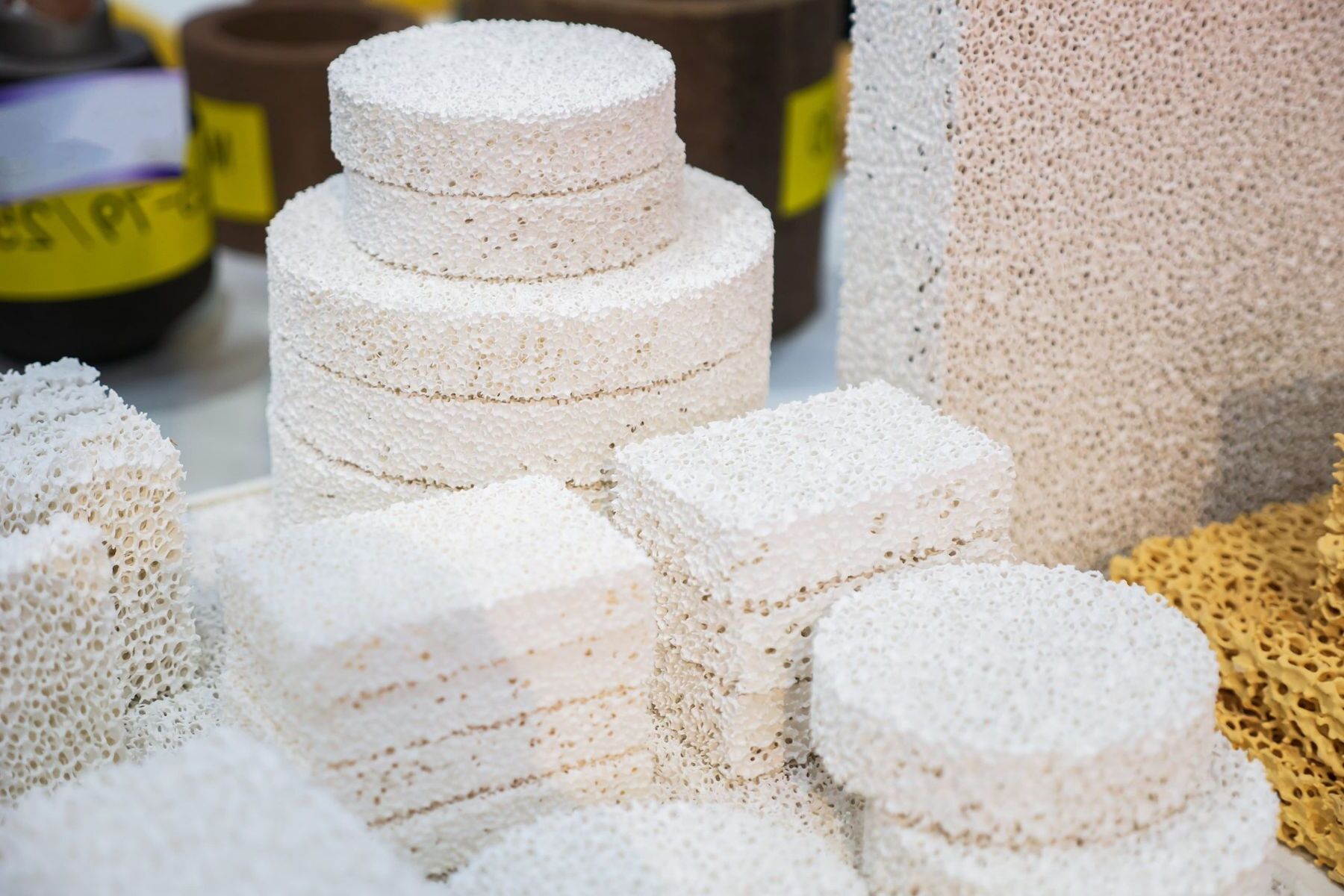
What is Aluminium Oxide? This compound, also known as alumina, is a white crystalline powder. Aluminium oxide is found in nature as corundum, which includes precious gems like sapphires and rubies. It’s a key ingredient in producing aluminum metal and has a wide range of uses in industries. From acting as an abrasive in sandpaper to serving as an insulator in electronics, its versatility is impressive. Additionally, it’s used in the medical field for implants and prosthetics due to its biocompatibility. Curious about more? Let’s dive into 40 fascinating facts about this remarkable compound!
Key Takeaways:
- Aluminium oxide, also known as alumina, is a versatile compound found in sapphires, toothpaste, ceramics, and more. It's used in everyday products, industrial processes, and even has health and environmental benefits.
- From spark plugs to bulletproof vests, aluminium oxide has a fascinating history and continues to be researched for new innovations in nanotechnology, energy storage, filtration, and catalyst development.
What is Aluminium Oxide?
Aluminium oxide, also known as alumina, is a chemical compound with the formula Al₂O₃. It is a significant material in various industries due to its unique properties. Here are some fascinating facts about this versatile compound.
-
Aluminium oxide is naturally found in the mineral corundum, which includes precious gemstones like sapphires and rubies.
-
It is an amphoteric substance, meaning it can react with both acids and bases.
-
This compound is used extensively in the production of aluminium metal through the Bayer process.
-
Aluminium oxide is highly resistant to heat and is used as a refractory material in furnaces and kilns.
-
It has a melting point of about 2,072 degrees Celsius (3,762 degrees Fahrenheit).
Uses in Everyday Products
Aluminium oxide's properties make it useful in a wide range of products we use daily. Let's explore some of these applications.
-
It is used as an abrasive in sandpaper and grinding wheels due to its hardness.
-
This compound is a key ingredient in toothpaste, where it acts as a polishing agent.
-
Aluminium oxide is used in the production of ceramics, providing strength and durability.
-
It serves as an insulator in electronic devices, protecting components from heat and electrical interference.
-
The compound is used in the manufacture of synthetic sapphires for watch faces and optical instruments.
Industrial Applications
Beyond everyday products, aluminium oxide plays a crucial role in various industrial processes.
-
It is used in the purification of water, acting as a filter to remove impurities.
-
Aluminium oxide is employed in the production of glass, enhancing its strength and clarity.
-
It is a catalyst in the chemical industry, speeding up reactions without being consumed.
-
The compound is used in the production of high-strength alloys for aerospace and automotive industries.
-
It is also used in the production of semiconductors, essential for modern electronics.
Health and Safety Aspects
While aluminium oxide is beneficial, it's important to understand its health and safety implications.
-
Inhalation of aluminium oxide dust can cause respiratory issues, so proper protective equipment is necessary.
-
The compound is considered non-toxic when ingested in small amounts, making it safe for use in food-related applications.
-
Aluminium oxide is used in medical implants due to its biocompatibility and strength.
-
It is also used in sunscreen products, providing protection against UV radiation.
-
The compound is used in dental materials, such as crowns and bridges, due to its durability.
Environmental Impact
Understanding the environmental impact of aluminium oxide is crucial for sustainable use.
-
The extraction of aluminium from bauxite ore, which contains aluminium oxide, can lead to deforestation and habitat destruction.
-
Recycling aluminium reduces the need for new aluminium oxide production, conserving natural resources.
-
Aluminium oxide is stable and does not degrade easily, posing minimal risk to the environment when disposed of properly.
-
The compound is used in environmental cleanup efforts, such as removing pollutants from water and soil.
-
Advances in technology are making the production of aluminium oxide more energy-efficient and environmentally friendly.
Fun and Interesting Facts
Let's dive into some fun and lesser-known facts about aluminium oxide.
-
Aluminium oxide is used in the production of spark plugs, ensuring efficient ignition in engines.
-
The compound is used in the creation of artificial joints, providing strength and wear resistance.
-
It is also used in the production of bulletproof vests, offering protection due to its hardness.
-
Aluminium oxide is used in the production of reflective coatings for telescopes and other optical devices.
-
The compound is used in the production of fire retardants, helping to prevent the spread of flames.
Historical Significance
Aluminium oxide has played a significant role throughout history. Here are some historical facts.
-
The ancient Egyptians used aluminium oxide in the form of alum for dyeing fabrics.
-
In the 19th century, aluminium oxide was crucial in the development of the Hall-Héroult process for aluminium extraction.
-
The compound was used in early forms of glassmaking, enhancing the strength and clarity of glass.
-
Aluminium oxide played a role in the development of early ceramics, providing durability and heat resistance.
-
The compound has been used in traditional medicine for its astringent properties.
Scientific Research and Innovations
Ongoing research continues to uncover new uses and properties of aluminium oxide.
-
Scientists are exploring the use of aluminium oxide in nanotechnology for advanced materials and devices.
-
Research is being conducted on using aluminium oxide in energy storage systems, such as batteries and supercapacitors.
-
The compound is being studied for its potential use in advanced filtration systems for clean water.
-
Aluminium oxide is being investigated for its role in developing new catalysts for chemical reactions.
-
Innovations in materials science are leading to the creation of new aluminium oxide-based composites with enhanced properties.
The Final Word on Aluminium Oxide
Aluminium oxide is a fascinating compound with a wide range of uses. From its role in producing aluminum metal to its applications in ceramics, abrasives, and even medicine, this versatile material is everywhere. Its hardness makes it perfect for cutting tools, while its insulating properties are crucial in electronics. Not to mention, it's a key ingredient in many everyday products like toothpaste and sunscreen.
Understanding these facts about aluminium oxide can help you appreciate its importance in modern life. Whether you're a student, a professional, or just curious, knowing more about this compound can be quite enlightening. So next time you encounter something made with aluminium oxide, you'll have a deeper understanding of its significance. Keep exploring and learning—there's always more to discover about the materials that shape our world.
Frequently Asked Questions
Was this page helpful?
Our commitment to delivering trustworthy and engaging content is at the heart of what we do. Each fact on our site is contributed by real users like you, bringing a wealth of diverse insights and information. To ensure the highest standards of accuracy and reliability, our dedicated editors meticulously review each submission. This process guarantees that the facts we share are not only fascinating but also credible. Trust in our commitment to quality and authenticity as you explore and learn with us.


